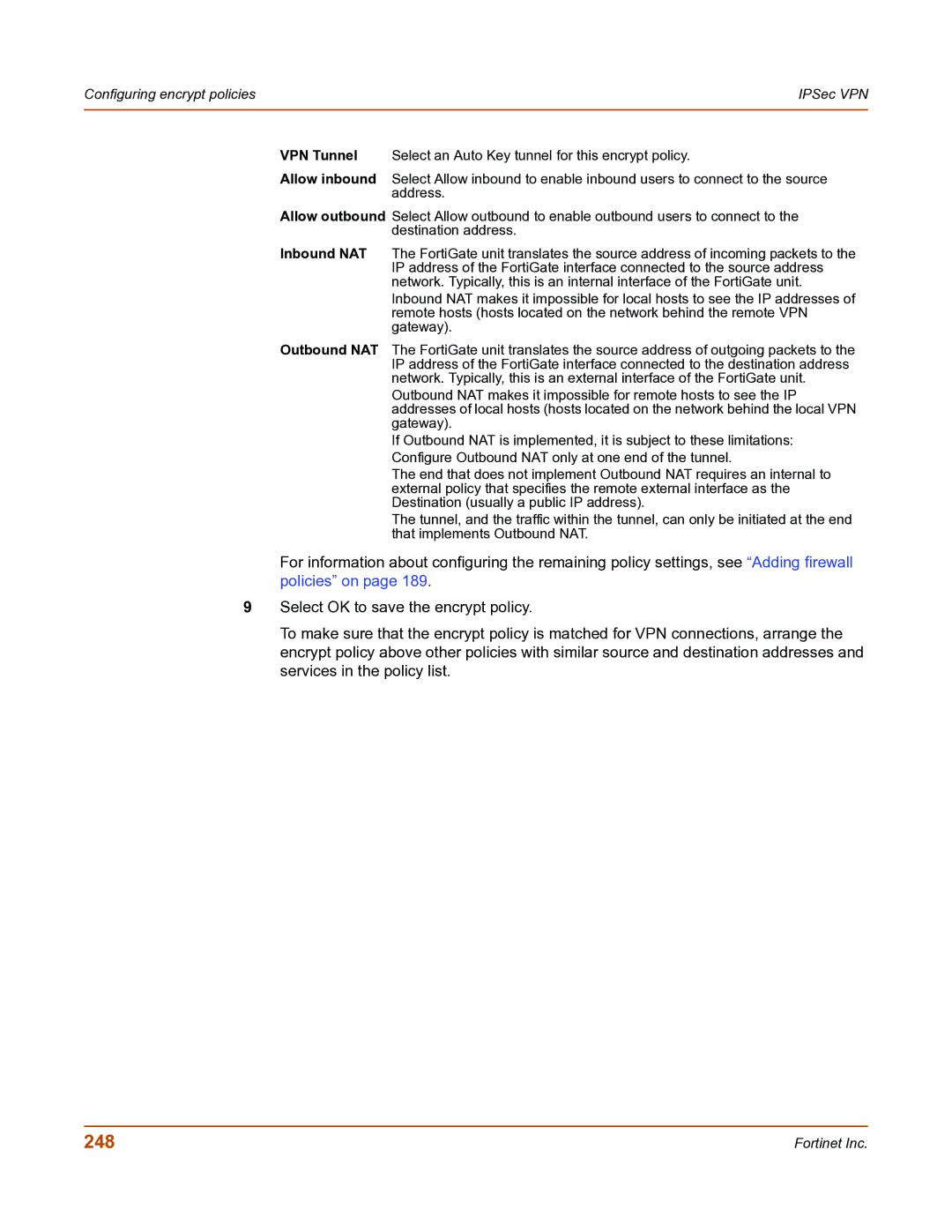Configuring encrypt policies | IPSec VPN |
|
|
VPN Tunnel Select an Auto Key tunnel for this encrypt policy.
Allow inbound Select Allow inbound to enable inbound users to connect to the source address.
Allow outbound Select Allow outbound to enable outbound users to connect to the destination address.
Inbound NAT The FortiGate unit translates the source address of incoming packets to the IP address of the FortiGate interface connected to the source address network. Typically, this is an internal interface of the FortiGate unit. Inbound NAT makes it impossible for local hosts to see the IP addresses of remote hosts (hosts located on the network behind the remote VPN gateway).
Outbound NAT The FortiGate unit translates the source address of outgoing packets to the IP address of the FortiGate interface connected to the destination address network. Typically, this is an external interface of the FortiGate unit.
Outbound NAT makes it impossible for remote hosts to see the IP addresses of local hosts (hosts located on the network behind the local VPN gateway).
If Outbound NAT is implemented, it is subject to these limitations: Configure Outbound NAT only at one end of the tunnel.
The end that does not implement Outbound NAT requires an internal to external policy that specifies the remote external interface as the Destination (usually a public IP address).
The tunnel, and the traffic within the tunnel, can only be initiated at the end that implements Outbound NAT.
For information about configuring the remaining policy settings, see “Adding firewall policies” on page 189.
9Select OK to save the encrypt policy.
To make sure that the encrypt policy is matched for VPN connections, arrange the encrypt policy above other policies with similar source and destination addresses and services in the policy list.
248 | Fortinet Inc. |
